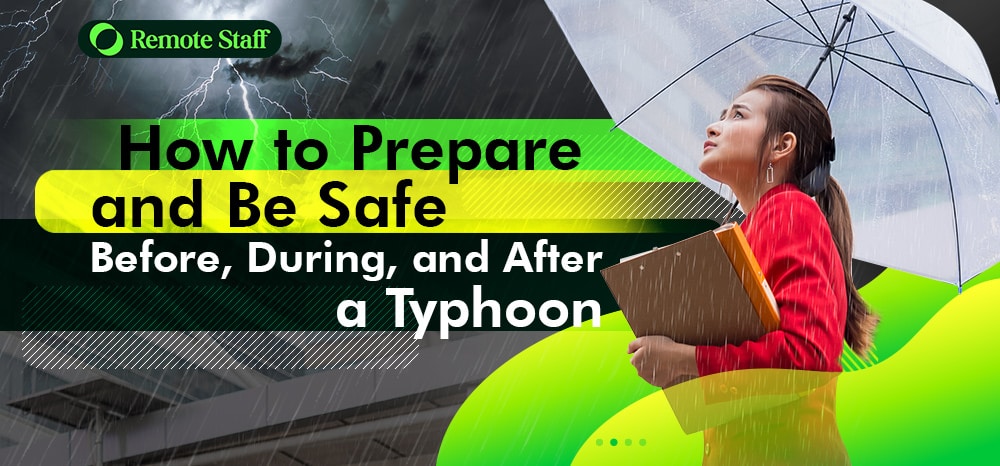The Philippines is home to multitudes of typhoons throughout the year. That’s roughly 20 typhoons in a year. And not just regular typhoons, we even got the most turbulent ones recorded in history, namely Super Typhoon Haiyan (top 2 at 190 mph) and Super Typhoon Meranti (top 3 at 190mph). And we just experienced the strongest in history last year with Super Typhoon Goni (top 1 at 195 mph)
It goes to show, we all need to know how to prepare for the coming of any typhoon in the Philippines. After all, we are geographically susceptible to these natural calamities. So here is how to prepare and stay safe during a typhoon.
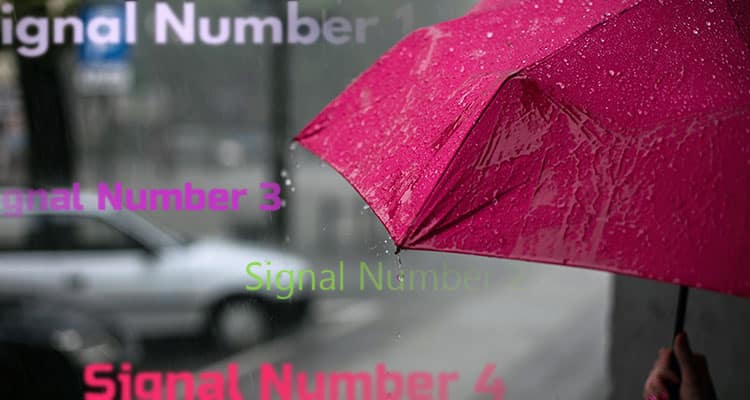
Understanding Storm Signals
The Philippine Atmospheric, Geophysical, and Astronomical Services Administration (PAG-ASA) handles all the readings and precautions when a typhoon is imminent. PAGASA devised storm signals to warn the public of the impending danger.
Take note; these numbers give you ample time to prepare for the storm’s landfall.
-
Signal Number 1
The storm has a speed of 30 KPH to 60 KPH and is expected to hit the area in 36 hours.
-
Signal Number 2
The storm has a speed of 60 KPH to 100 KPH and is expected to hit the area in 24 hours.
-
Signal Number 3
The storm has a speed of 100 KPH to 185 KPH and is expected to hit the area in 18 hours.
-
Signal Number 4
The storm has a speed of 185 KPH up and is expected to hit the area in 12 hours.
Don’t panic because you have ample time to prepare for the storm. But some people complain when no rain or strong winds hit their area after these signal warnings are raised. Stop complaining and just be thankful that you are blessed to not experience it all.
Knowing this, here is what you do before, during, and after a typhoon.
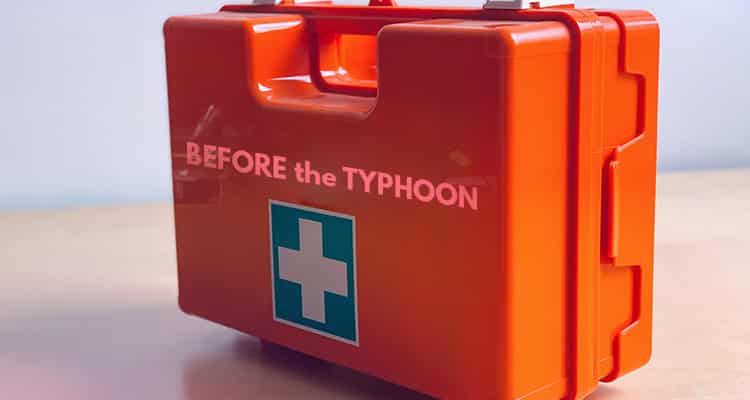
Before the Typhoon

Build an Emergency Kit
You don’t know how you will be affected by the typhoon. Building an emergency kit is crucial for your safety. After all, it’s better safe than sorry. Here is what your emergency kit should contain.
- 3-Day Supply of non-perishable food (like canned goods)
- 1 gallon a day of water per person (roughly good for 3-6 days)
- Water Purification Tablets
- First Aid Kit
- Can Opener
- Battery-Powered Radio
- Flashlight
- Batteries
- Extra Phone
- Phone Charger
- Garbage Bags
- Duct Tape
- Towelettes
- Wrench
- Powerbank
With this, you have the goods to live for the next 3 to 6 days just in case you are terribly hit by the typhoon.
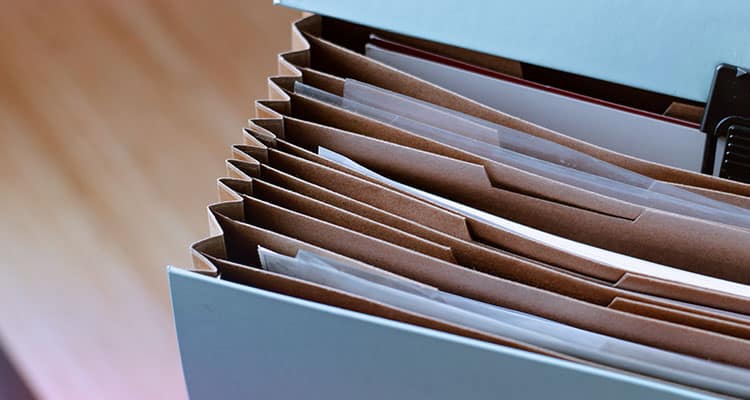
Secure your Car and Your Home
Depending on your area, you might need extra care with some of your property. If you are in a flood-prone place, you might need to park your car on higher ground. Do not park them under an electric pole or a tree.
And if your city will be hit with a strong typhoon signal, you might need to reinforce your windows and glass doors with pieces of plywood. For your furniture, you can move them upstairs just in case water might come in from floods.
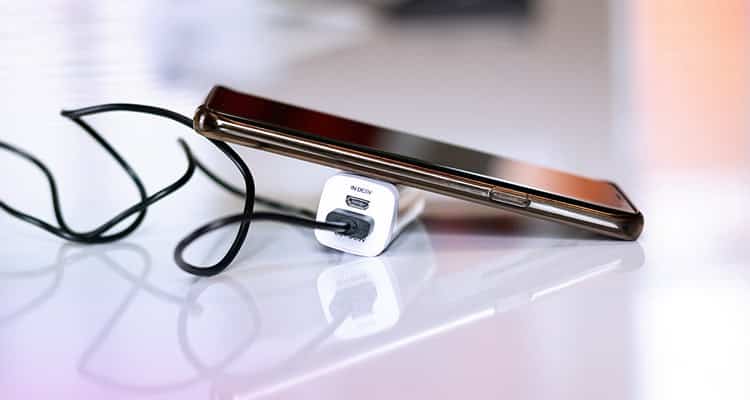
Charge All Your Gadgets
Phone, Laptop, Tablet, Radio, and more. Your precious gadgets are powerful communication tools during these times. It should be at full charge before the typhoon hits. In this way, you can be ready or at least entertained when power outages happen.
Have your power banks charged as well.

Save Emergency Hotlines
In case of emergencies, who will you contact? You should have a list of emergency organizations just in case your area is hit catastrophically. We compiled all the hotlines you can call just in case.


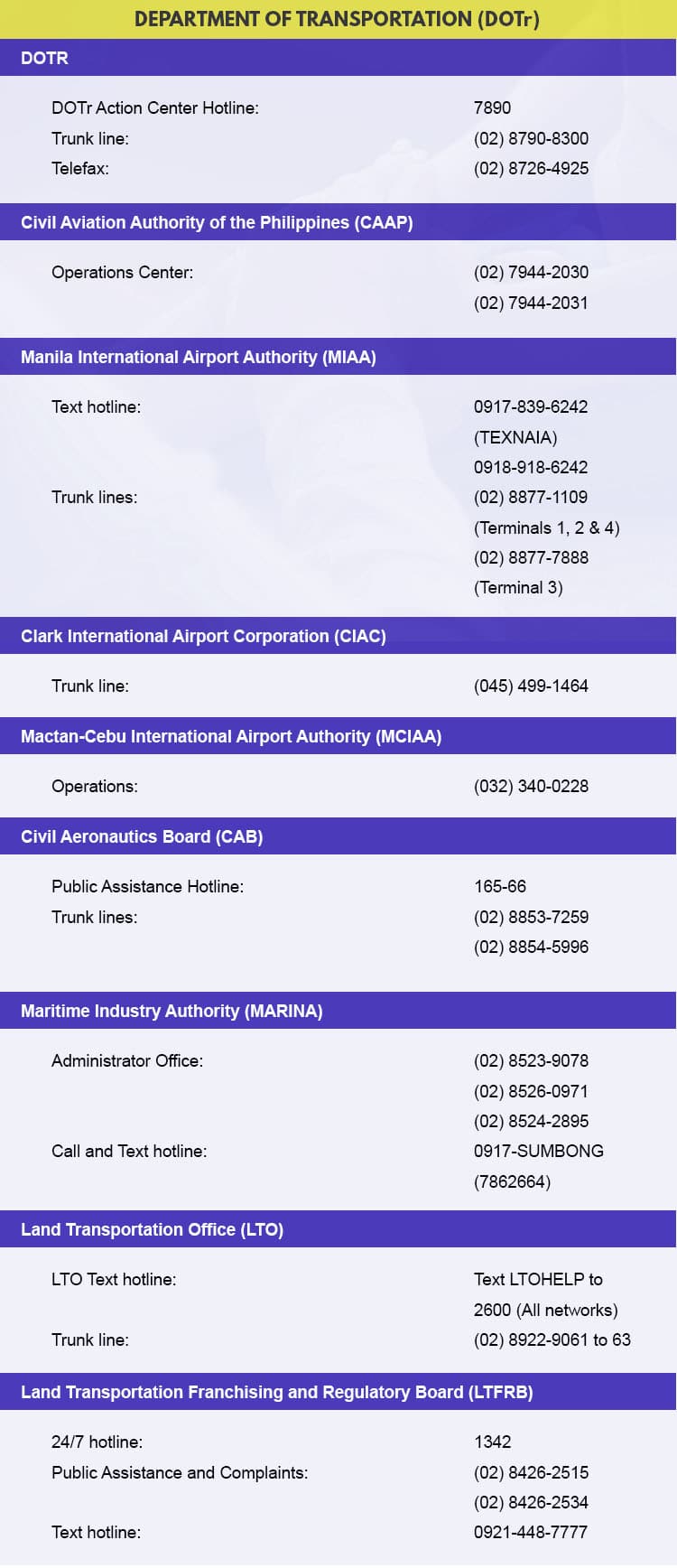
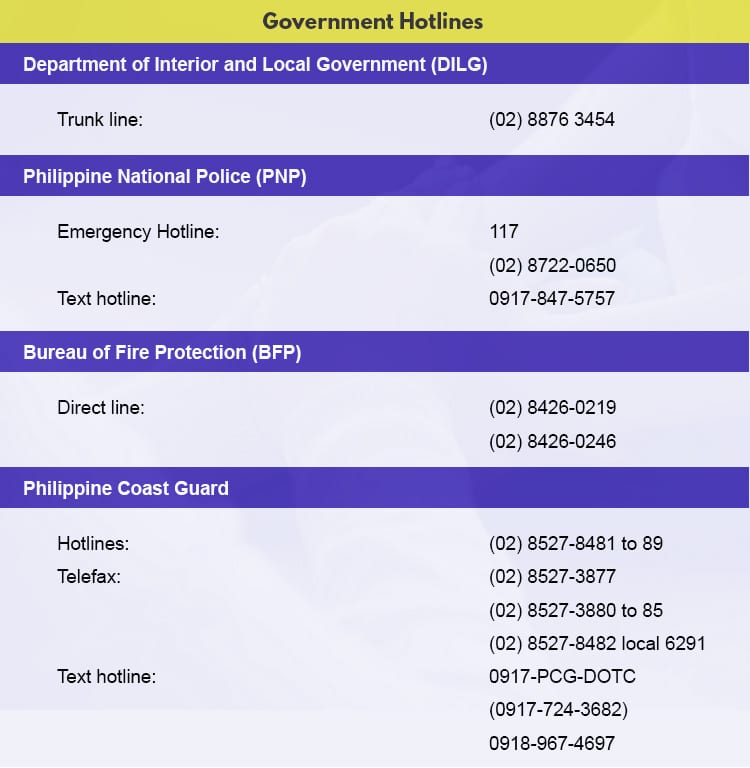
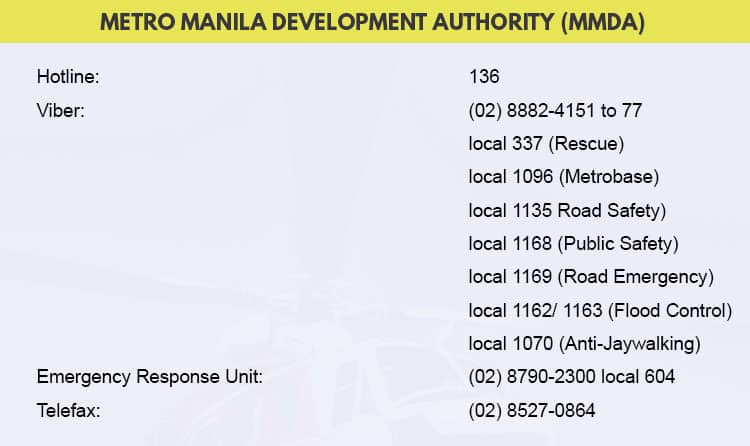

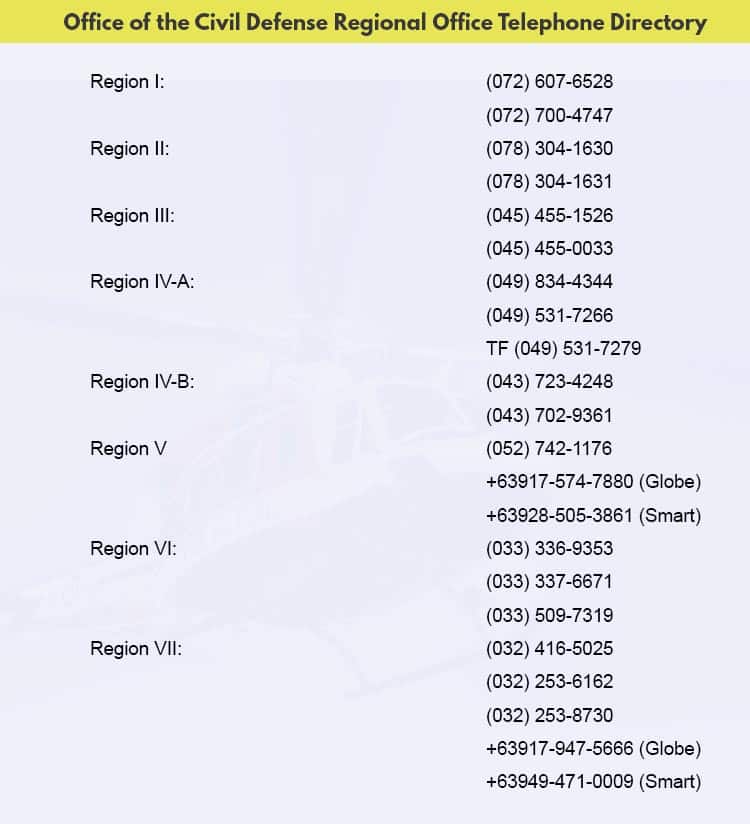


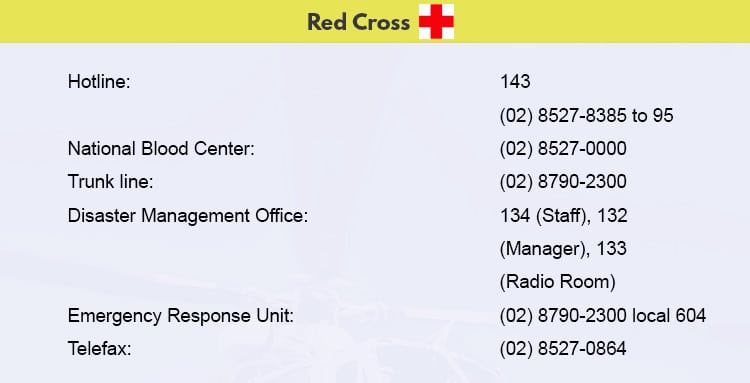

You can print out or save the images above for your safety.
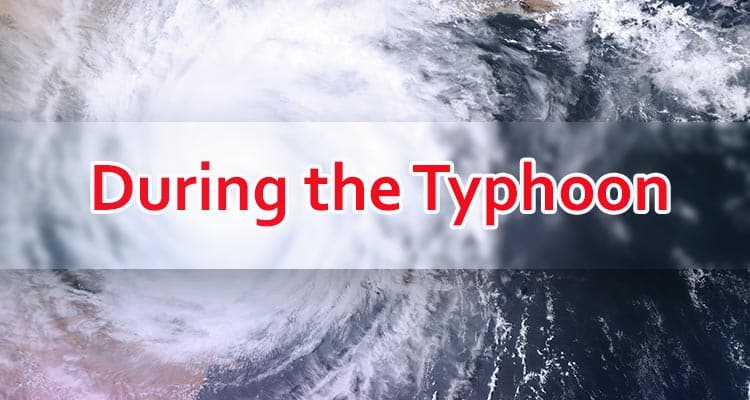
During the Typhoon

Don’t Go Out
You may forget some essential items, or you may want to buy your favourite burrito. Please, refrain from going out when the storm approaches. You don’t want to be in danger, especially when the roads are quite slippery or flooded.
Even if the storm suddenly stopped, still don’t go out. You might be in the eye of the storm, so the winds will start to pick up after a few hours again.
Keep Your Refrigerator at the Coldest
Food is an essential resource, especially if you can’t go out to replenish your stocks. If you have perishable food, put your refrigerator in the coldest setting. In this way, you can preserve items for a longer period.

Head to a Safe Part in Your Home
There will be areas in your home that can be dangerous to your physical being. Locate yourself and your family away from glass doors and windows. Also, stay on the second floor if your area is prone to flooding.

Be Up-to-date with Information from News Sources
Information is vital during these trying times. Be up-to-date with information by checking reputable news sources or social media. You can also tune-in radio channels that disseminate relevant information about the storm.
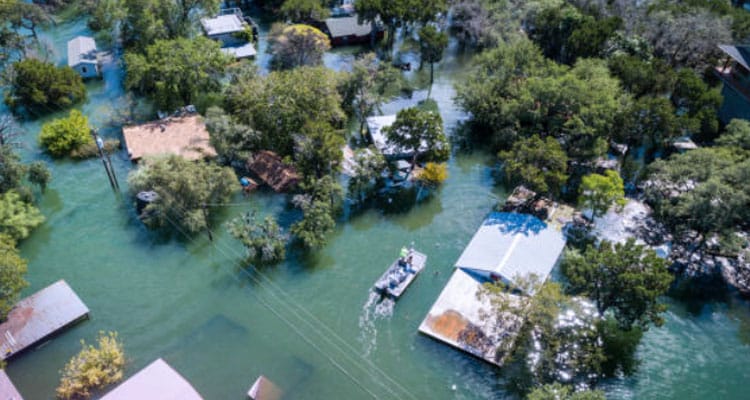
Evacuate if Instructed To
Sometimes, the damage of a typhoon is severe enough that you need to evacuate. Please evacuate and leave all unnecessary belongings when instructed by your local government. Check their evacuation plans and follow them accordingly.
After the Typhoon

Avoid Driving
Depending on how strong the typhoon is, there might be fallen debris, powerlines, and trees in its aftermath. There can be flooding also during this time. Better avoid driving first to prevent unnecessary accidents that can happen to you.

Don’t Cook or Drink Tap Water
After a typhoon, tap water might not be as safe as it seems. There can be different harmful chemicals, viruses, and bacteria in your tap. Unless you boil it first, it’s best to not cook or drink with tap water.
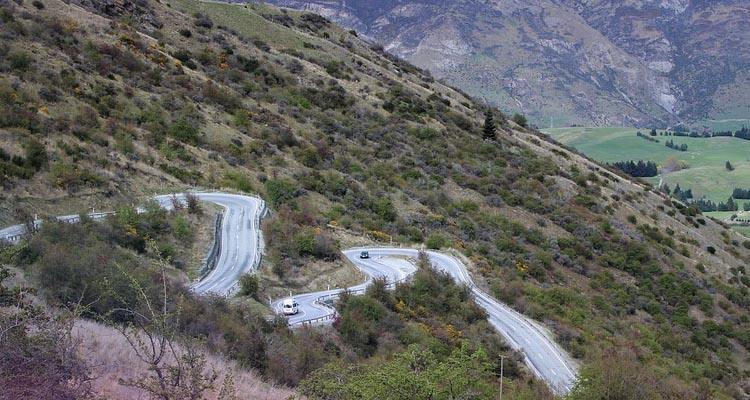
Avoid Hilly Areas
The land might not be firm after a storm. With this, there are dangers of landslides that can occur. Avoid going to hilly areas after a storm. Better wait for a few days before visiting.

Conclusion
We are not 100% safe from every calamity. But with proper planning and preparation, we significantly lower the chances. Stay safe, everyone!

